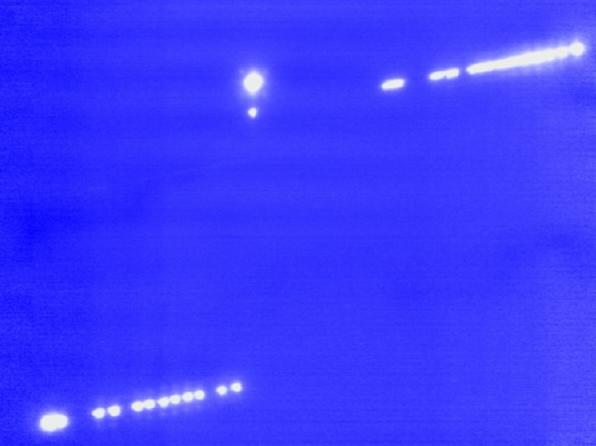Measurements made at Bordeaux Observatory and in Brazil for several months prior to the July 2005 event allowed astronomers to obtain an accuracy of about 20 mas on the prediction, showing that the occultation could be observable with several large telescopes in Chile, as well from smaller telescopes in Brazil, Paraguay, Uruguay and Argentina (Figure 1).

The Paris Observatory team could then gather data from Paranal, obtained with the NACO adaptive optics camera installed on the "Yepun" 8.2-m Very Large Telescope (Figure 2). Data were also obtained from El Leoncito in Argentina, with the 2.15-m "Jorge Sahade" telescope, and from San Pedro de Atacama (Chile), with the Italian 50-cm amateur "Campo Catino Austral Telescope".


Charon’s radius determination could have indirect consequences on Pluto’s size (and then also density) and on Pluto’s atmospheric structure. One can now re-analyze the "mutual events" (eclipses et occultations) of Pluto and Charon observed during the 1980’s by fixing Charon’s radius to its value now determined by the occultation, and the satellite’s semi-major axis to its value derived from Hubble Space Telescope observations. There is then only one free parameter, Pluto’s radius, which can be derived with much better accuracy. This radius can in turn improve the atmospheric models for the planet, by discriminating clear atmospheres with a strong inversion layer near the surface, from hazy atmospheres, with a possible convective layer. This occultation finally provided an upper limit for a hypothetical Charon’s atmosphere. For instance, we can give an upper limit of about 110 nanobar in pressure at the surface for an isothermal nitrogen atmosphere. This upper limit can be decreased to 15 nanobar for a methane atmosphere, a value one thousand times smaller than for Pluto’s atmosphere (Figure 4).

Reference
B. Sicardy, A. Bellucci,E. Gendron,F. Lacombe,S. Lacour, J. Lecacheux, E. Lellouch, S. Renner, S. Pau, F. Roques, T. Widemann, F. Colas, F. Vachier, N. Ageorge, O. Hainaut, O. Marco, W. Beisker, E. Hummel, C. Feinstein,H. Levato, A. Maury, E. Frappa, B. Gaillard, M. Lavayssière, M. Di Sora, F. Mallia, G. Masi, R. Behrend, F. Carrier, O. Mousis, P. Rousselot, A. Alvarez-Candal, D. Lazzaro, C. Veiga, A.H. Andrei, M. Assafin, D.N. da Silva Neto, R. Vieira Martins, C. Jacques, E. Pimentel, D. Weaver, J.-F Lecampion, F. Doncel, T. Momiyama, G. Tancredi : "Charon’s size and upper limit on the atmosphere from a stellar occultation" Nature, 5 January 2006
